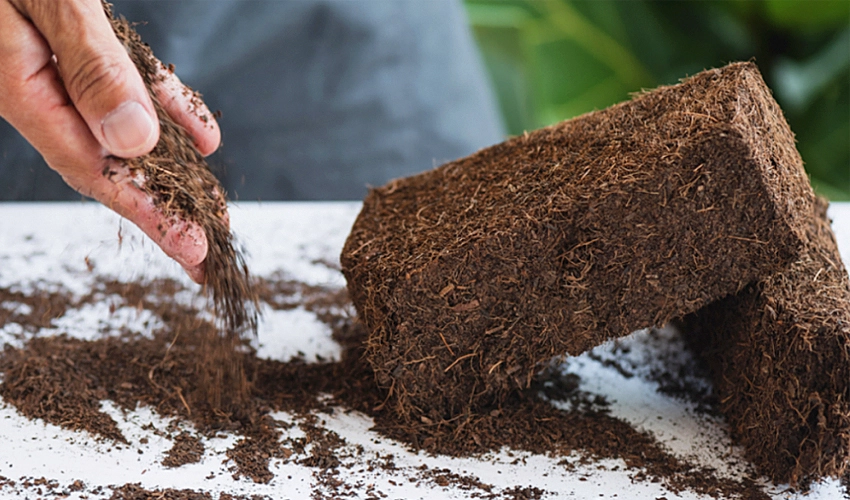


Hari Hara Sudhan Coir Pith (5 kg variant) is a high-quality, natural growing medium derived from coconut husks. It is an eco-friendly and sustainable alternative to synthetic materials, known for its excellent moisture retention properties. Ideal for use in gardening, agriculture, and hydroponics, this coir pith promotes healthy plant growth by improving soil aeration and drainage. The 5 kg variant is easy to handle and perfect for small-scale applications. It is completely biodegradable, offering a sustainable solution for agricultural needs while enhancing soil quality and root development.
 Soil Conditioner: Coir pith is an excellent soil conditioner that improves soil structure, enhances water retention, and promotes healthy root growth.
Soil Conditioner: Coir pith is an excellent soil conditioner that improves soil structure, enhances water retention, and promotes healthy root growth.
 Hydroponics: It serves as a key component in hydroponic systems, providing a stable medium for plant growth by retaining moisture while allowing proper drainage.
Hydroponics: It serves as a key component in hydroponic systems, providing a stable medium for plant growth by retaining moisture while allowing proper drainage.
 Potting Mix: Ideal for use in potting mixes, coir pith enhances aeration and moisture retention, making it perfect for indoor and outdoor plants.
Potting Mix: Ideal for use in potting mixes, coir pith enhances aeration and moisture retention, making it perfect for indoor and outdoor plants.
 Seed Starting: Coir pith is commonly used for starting seeds as it provides a conducive environment for germination and root development.
Seed Starting: Coir pith is commonly used for starting seeds as it provides a conducive environment for germination and root development.
 Mulching: Used as mulch in gardens to retain moisture, prevent weed growth, and regulate soil temperature.
Mulching: Used as mulch in gardens to retain moisture, prevent weed growth, and regulate soil temperature.
 Greenhouses: In greenhouses, coir pith acts as a growing medium, ensuring proper moisture and air circulation for plant health.
Greenhouses: In greenhouses, coir pith acts as a growing medium, ensuring proper moisture and air circulation for plant health.
 Composting: It can be used in composting as a natural, biodegradable material that helps balance the carbon-to-nitrogen ratio.
Composting: It can be used in composting as a natural, biodegradable material that helps balance the carbon-to-nitrogen ratio.
 Eco-Friendly Packaging: Coir pith is also used in the production of eco-friendly packaging material for fragile goods due to its shock-absorbing qualities.
Eco-Friendly Packaging: Coir pith is also used in the production of eco-friendly packaging material for fragile goods due to its shock-absorbing qualities.
| Property | Specification |
|---|---|
| Weight | 5 kg |
| Size | Fine granules or compressed blocks |
| Moisture Content | Less than 15% |
| pH Level | 5.5 to 6.5 |
| Bulk Density | 0.2 to 0.3 g/cm³ |
| Water Absorption Capacity | Up to 8 times its weight |
| Packaging | Compressed 5 kg bales |
| Application | Soil conditioner, hydroponics, gardening, and agriculture |